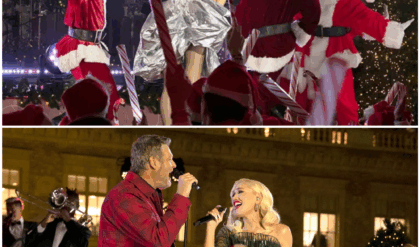In a television world where reboots often feel like desperate cash grabs, few announcements carry the electric charge of authenticity and promise like the revival of Prison Break. Hulu has officially greenlit a bold new chapter in the franchise that captivated millions two decades ago, delivering the OG thrill, tension, and high-stakes escapes that turned it into a global phenomenon. Set in the same shadowy universe of corruption and unbreakable brotherhood but with an entirely fresh ensemble, this reboot promises to crack open the walls of a mixed-gender supermax prison, unleashing a torrent of betrayals, ingenious schemes, and moral dilemmas that echo the original’s pulse-pounding spirit. As filming ramps up on the pilot, slated for a late 2026 premiere, fans old and new are buzzing: Is this the breakout hit that recaptures lightning in a bottle, or a daring evolution that redefines the escape thriller for the streaming age?
The original Prison Break exploded onto Fox screens in 2005, a gritty procedural disguised as a high-concept adrenaline rush. Created by Paul Scheuring, the series followed structural engineer Michael Scofield (Wentworth Miller), who orchestrates an elaborate prison break from Fox River State Penitentiary to exonerate his wrongfully convicted brother, Lincoln Burrows (Dominic Purcell). Michael’s body, inked with the prison’s blueprints in a mesmerizing tattoo montage, became an instant icon—symbolizing not just ingenuity but the raw desperation of men fighting for freedom. What started as a taut, 22-episode freshman season spiraled into a sprawling saga across four seasons (2005-2009), a direct-to-video finale film The Final Break (2009), and a controversial fifth-season revival in 2017. At its peak, the show drew over 10 million viewers per episode in the U.S. alone, spawning international remakes in countries from India to Turkey and cementing its status as a cultural touchstone for binge-watchers worldwide.
What made Prison Break a phenomenon? It wasn’t just the escapes—though those were masterclasses in suspense, from the nail-biting pipe crawls and riot diversions to helicopter heists under moonlight. It was the human core: themes of loyalty, sacrifice, and the blurred line between justice and vigilantism. Lincoln, a blue-collar everyman framed for assassinating the vice president’s brother, embodied raw survival instinct, while Michael’s cerebral plotting revealed a tragic vulnerability beneath his calm facade. Supporting players like the sly con artist Theodore “T-Bag” Bagwell (Robert Knepper), the steadfast Fernando Sucre (Amaury Nolasco), and the principled doctor Sara Tancredi (Sarah Wayne Callies) added layers of betrayal and redemption. The show’s serialized format kept audiences hooked, with each twist—poisonings, underground tunnels, and corporate conspiracies—building to cliffhangers that felt like gut punches. Globally, it resonated in an era of post-9/11 paranoia, mirroring fears of institutional distrust and the illusion of security in a chaotic world.
Yet, the road to revival hasn’t been smooth. After Season 4’s polarizing finale, where Michael seemingly sacrificed himself in a Panama flood, fans mourned the closure. The 2017 revival, resurrecting Michael in a Yemeni prison amid ISIS-inspired chaos, reignited passion but divided viewers with its darker tone and unresolved threads. Miller, who came out as queer in 2013, stepped away in 2021, citing exhaustion from portraying straight characters: “My soul was not in it.” Purcell echoed support, but whispers of a sixth season persisted, fueled by the duo’s chemistry in other projects like The Flash and Legends of Tomorrow. Enter Hulu’s reboot: a strategic pivot announced on October 20, 2025, that sidesteps legacy fatigue by forging ahead with new blood. Scheuring returns as executive producer alongside showrunner Elgin James (Mayans M.C.), Dawn Olmstead, Marty Adelstein, and Neal Moritz, ensuring the DNA of desperation and defiance remains intact.
This isn’t a sequel—it’s a reimagining that honors the original while injecting fresh dynamics. The story unfolds in a cutting-edge, co-ed federal penitentiary in the American Southwest, a fortress blending high-tech surveillance with brutal old-school brutality. Here, inmates aren’t just locked up; they’re pawns in a web of political intrigue involving a shadowy government black ops program. The central escape? A coalition of prisoners, each with personal stakes, must breach the facility to expose a conspiracy that reaches into the highest echelons of power. Think original Prison Break‘s brotherhood amplified by gender-integrated alliances, forbidden romances, and clashes that heighten the interpersonal stakes. The facility’s design—a labyrinth of smart cells, drone-patrolled yards, and AI-monitored common areas—updates the blueprints for a digital age, where hacks and viral leaks rival physical breakouts.
Leading the charge is an electrifying new cast, blending rising stars with seasoned pros to evoke the original’s ensemble energy. Emily Browning (American Gods, The Uninvited) stars as Cassidy, a fierce hacker and former whistleblower incarcerated for exposing corporate espionage. Her intellect rivals Michael’s, but her arc explores the cost of digital rebellion in a surveillance state. Drake Rodger (Landman, The Winchesters) plays Tommy, a stoic ex-Marine wrongfully imprisoned for a battlefield cover-up, channeling Lincoln’s protective fury with a modern veteran’s PTSD scars. Lukas Gage (The White Lotus, Dead Boy Detectives) brings sly charm as Jackson, a charismatic grifter whose silver tongue masks a tragic family secret, echoing Sucre’s loyalty but with queer undertones that nod to evolving representation.
Clayton Cardenas (Mayans M.C.) embodies “Ghost,” a spectral operative framed for assassinating a corrupt senator, his haunted demeanor adding noir depth. JR Bourne (Teen Wolf) as Junior, the facility’s cunning warden with a hidden agenda, provides a formidable antagonist, while Georgie Flores (CSI: Vegas) as Andrea, a resilient medic navigating alliances in the women’s wing, infuses heart and tension. Rounding out the core is Myles Bullock (Criminal Minds: Evolution) as Darius “Red,” a fiery activist whose revolutionary ideals spark the group’s unity. This diverse lineup—spanning ethnicities, genders, and backgrounds—reflects Hulu’s commitment to inclusivity, promising sparks from cross-gender dynamics absent in the male-dominated original.
Production buzz is palpable, with the pilot lensing in New Mexico’s stark deserts to capture the prison’s isolating menace. James, known for gritty authenticity, directs the opener, weaving in visceral action: improvised shivs from recycled tech, midnight yard brawls under floodlights, and a heart-stopping sequence where Cassidy reprograms the facility’s AI for a fleeting blackout. Cinematographer Hoyte van Hoytema (Oppenheimer) joins for select episodes, delivering the original’s signature close-quarters claustrophobia with a sleeker, drone-shot aesthetic. The score, evolving from Ramin Djawadi’s iconic theme, incorporates electronic pulses and haunting folk motifs to underscore the blend of analog grit and cyber threats.
Thematically, this reboot grapples with contemporary shadows: mass incarceration’s racial disparities, the prison-industrial complex’s profiteering, and technology’s double-edged sword in eroding privacy. Cassidy’s whistleblower backstory critiques Big Tech’s collusion with law enforcement, while Tommy’s arc confronts veteran reintegration failures. Yet, at its soul, it’s about unbreakable bonds—friends forging family amid betrayal, echoing the Scofield-Burrows ethos without aping it. Early script leaks hint at Easter eggs: a faded Fox River tattoo glimpsed in a visitor’s log, a whispered reference to “The Company” conspiracy, thrilling longtime fans without alienating newcomers.
Fan reactions have been a whirlwind. Social media erupted post-announcement, with #PrisonBreakReboot trending worldwide. “Finally, a fresh con that honors the blueprint without recycling it,” tweeted one devotee, while skeptics worried, “No Miller? No point.” Purcell, ever the hype man, posted a cryptic Instagram: “The walls are cracking again. Who’s ready to run?” Miller, focusing on queer-led projects like his directorial debut Kepler Five, offered gracious support via statement: “Grateful the story lives on—escape into new hands.” Industry insiders predict 8-10 episodes for Season 1, with potential for expansion if viewership mirrors The Handmaid’s Tale‘s streaming dominance.
Why now? In an age of true-crime pods and escape-room obsessions, Prison Break‘s revival taps into escapist catharsis amid real-world confinement—be it literal prisons or metaphorical ones like economic stagnation. Hulu’s move positions it against Netflix’s Clickbait thrillers, betting on serialized suspense to build appointment viewing. For millennials who tattooed spirals in homage and Gen Z discovering it via TikTok edits, this reboot isn’t nostalgia porn; it’s a lifeline, proving that some stories, like freedom itself, refuse to stay caged.
As the pilot wraps and casting calls echo through casting sites, one thing’s certain: Prison Break is breaking out anew, dragging us into its labyrinth of lies and loyalty. Whether you’re revisiting the classics on Disney+ or queuing up for this fresh incarceration, prepare for the rush—the tension, the twists, the unrelenting drive to slip the noose. In a world full of locked doors, this gem reminds us: Every wall has a weak point. Find it, and run.





